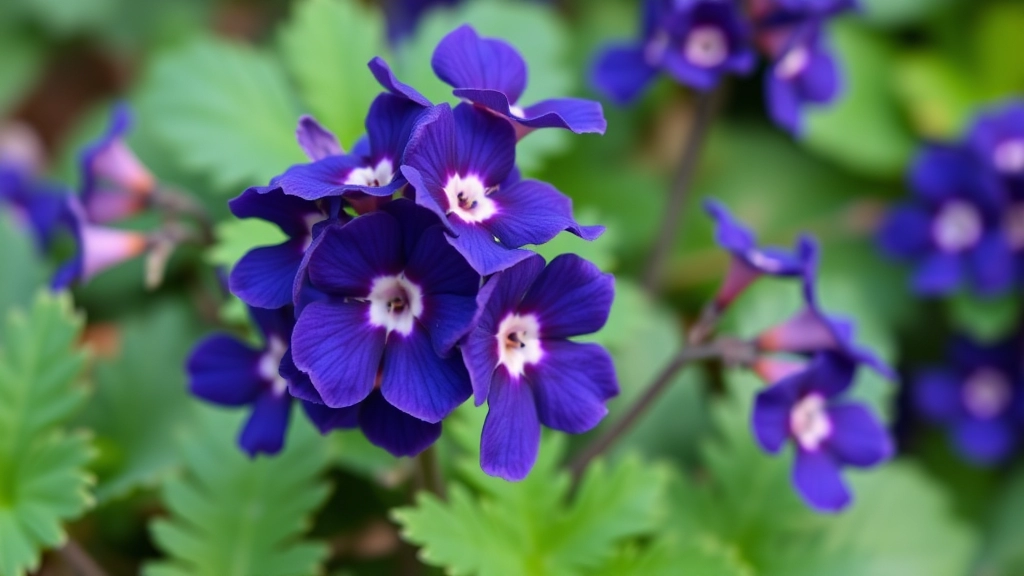Dark Blue Kalanchoe: A Unique Succulent
Have you ever come across a succulent as unique as the Dark Blue Kalanchoe? This rare variety stands out with its striking deep blue leaves, adding a touch of mystery to any plant collection. Whether you’re looking to buy one or already have one and need care tips, you’re in the right place.
Creating the Perfect Environment
Growing a Dark Blue Kalanchoe isn’t just about aesthetics; it’s about creating the perfect environment for it to thrive. From understanding its sunlight needs to mastering the art of propagation, we’ll cover everything you need to know. Ready to dive into the world of this captivating succulent? Let’s get started!
How to Identify the Rare Dark Blue Kalanchoe
Identifying the rare Dark Blue Kalanchoe can be quite the adventure for plant enthusiasts.
You may be wondering how to distinguish this unique variety from its more common relatives.
Here are some key characteristics to look for:
- Leaf Colour: The Dark Blue Kalanchoe features deep, rich blue-green leaves. They often have a waxy texture, giving them a distinctive sheen.
- Flower Appearance: One of the most striking features is its flowers. When in bloom, the Dark Blue Kalanchoe produces clusters of vibrant blue or purple flowers that can be quite stunning.
- Growth Habit: This variety typically has a compact growth habit. It can reach heights of around 30 cm, making it a perfect addition to smaller spaces.
- Leaf Shape: The leaves are generally rounded with a slightly scalloped edge, providing a unique texture that sets them apart from other Kalanchoe species.
- Stem Structure: The stems are sturdy and can support the weight of the flowers, which is a good indicator of a healthy plant.
- Overall Health: Healthy Dark Blue Kalanchoes will have plump leaves and vibrant flowers. If the leaves appear shrivelled or discoloured, it may indicate underlying issues.
For those interested in learning more about Kalanchoe care, check out our complete guide on caring for Kalanchoe succulents. If you’re fascinated by the diverse varieties of Kalanchoe, our guide on Kalanchoe Tomentosa varieties will provide you with more insights.
Best Conditions for Growing Dark Blue Kalanchoe
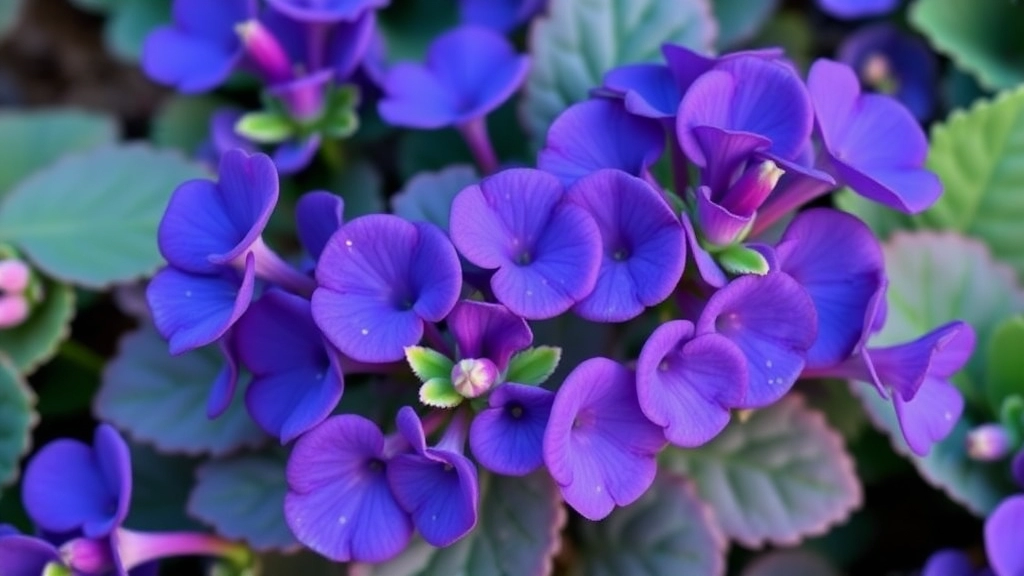
So, you’ve got your hands on that stunning Dark Blue Kalanchoe and now you’re wondering how to keep it thriving? You’re not alone! Many plant lovers find themselves puzzled about the best conditions for this unique beauty.
Light Requirements
First off, let’s talk about light. Dark Blue Kalanchoe loves bright, indirect sunlight.
- Ideal Spot: A windowsill with filtered light works wonders.
- Avoid Direct Sun: Too much direct sun can scorch those lovely leaves.
Temperature Preferences
Next up is temperature. This plant thrives in a warm environment.
- Optimal Range: Aim for 20-25°C (68-77°F).
- Avoid Cold Drafts: Keep it away from chilly windows or air conditioning vents.
Humidity Levels
Humidity is another factor to consider.
- Moderate Humidity: Dark Blue Kalanchoe prefers moderate humidity levels.
- Tips to Increase Humidity: If your home is dry, consider placing a tray of water nearby or misting occasionally.
Air Circulation
Lastly, don’t underestimate good air circulation.
- Breathable Space: Ensure your plant isn’t cramped in a corner.
- Avoid Stagnation: A little breeze can help prevent fungal issues.
By keeping these conditions in mind, you’re setting the stage for your Dark Blue Kalanchoe to flourish.
Propagation Tips: Starting from Seeds or Cuttings
When it comes to propagating the rare Dark Blue Kalanchoe, many enthusiasts often wonder whether to start from seeds or cuttings. Each method has its own advantages and challenges, but both can yield beautiful results.
Propagating from Seeds
Starting from seeds can be a rewarding experience, though it requires patience and care. Here’s how to do it effectively:
- Seed Selection: Choose high-quality seeds from a reputable source to ensure good germination rates.
- Sowing: Lightly scatter seeds on the surface of a well-draining soil mix. Avoid burying them too deep, as they need light to germinate.
- Moisture: Keep the soil consistently moist but not soggy. A light misting can help maintain humidity.
- Temperature: Seeds thrive in warm conditions, ideally around 20-25°C (68-77°F).
- Light: Once germinated, provide bright, indirect light to promote healthy growth.
Propagating from Cuttings
For those looking for a quicker method, propagating from cuttings can be more straightforward. Here’s a step-by-step guide:
Ideal Soil and Potting Mix for Dark Blue Kalanchoe
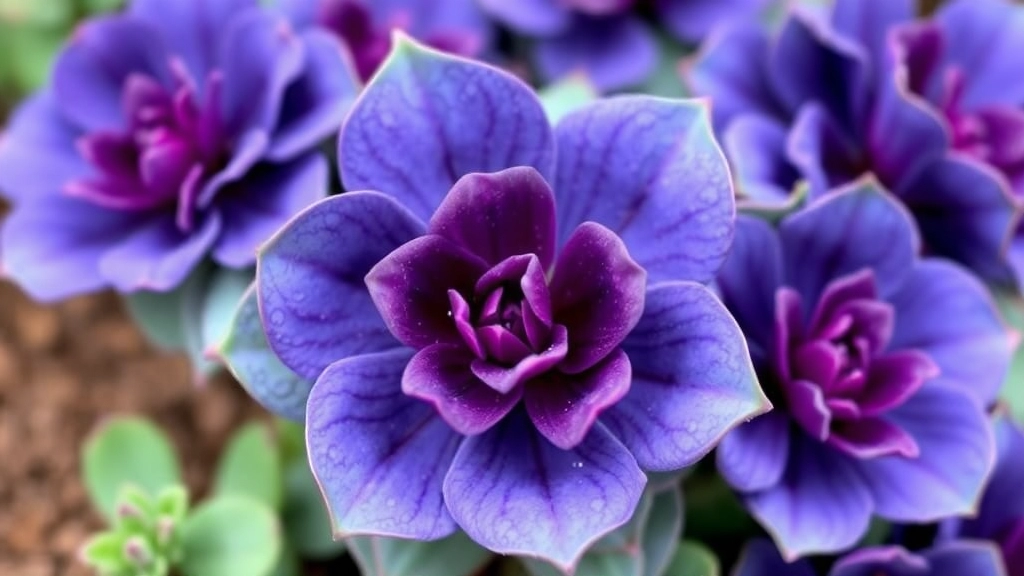
When it comes to cultivating the rare Dark Blue Kalanchoe, the right soil and potting mix play a crucial role in its growth and health. You might be wondering what kind of soil will provide the best support for this stunning plant.
Soil Characteristics
To ensure the Dark Blue Kalanchoe thrives, consider the following soil attributes:
- Well-draining: This plant is susceptible to root rot, so a potting mix that allows excess water to escape is essential.
- Sandy or gritty texture: A mix that includes sand or perlite can enhance drainage and prevent water retention.
- Slightly acidic to neutral pH: Aim for a pH range of 6.0 to 7.0 for optimal growth.
Recommended Potting Mix
You can create an ideal potting mix by combining the following components:
- 60% potting soil: A good quality, lightweight potting soil provides the necessary nutrients.
- 30% perlite or pumice: This will improve aeration and drainage.
- 10% compost: A small amount of compost can add beneficial microorganisms and nutrients.
Pot Selection
When choosing a pot for your Dark Blue Kalanchoe, keep these tips in mind:
- Drainage holes: Ensure the pot has adequate drainage holes to prevent water accumulation.
- Size: Select a pot that allows for some growth but isn’t overly large, as this can lead to excess moisture.
Watering Guidelines: Avoiding Root Rot
When it comes to nurturing your rare Dark Blue Kalanchoe, one of the most pressing concerns is ensuring that you don’t overwater it. Many plant owners worry about root rot, a common issue that can devastate your succulent. So, how do you strike the right balance?
Key Watering Tips:
- Check the Soil: Always check the top inch of soil. If it feels dry, it’s time to water. If it’s still moist, hold off for a few days.
- Watering Frequency: During the growing season (spring and summer), water your Kalanchoe every two to three weeks. In the dormant months (autumn and winter), reduce this to once a month.
- Drainage is Crucial: Ensure your pot has drainage holes. This allows excess water to escape, reducing the risk of root rot.
- Watering Method: Water deeply but infrequently. Instead of a light sprinkle, give it a good soak until water drains out of the bottom.
- Avoid Water on Leaves: Make sure to water the soil directly and avoid getting water on the leaves, as this can lead to fungal issues.
By following these guidelines, you can help your Dark Blue Kalanchoe thrive without the fear of root rot. For more detailed tips, check out our Kalanchoe Flapjack Paddle Plant Care Guide and learn how to plant Kalanchoe in a pot effectively.
Common Pests and How to Prevent Them
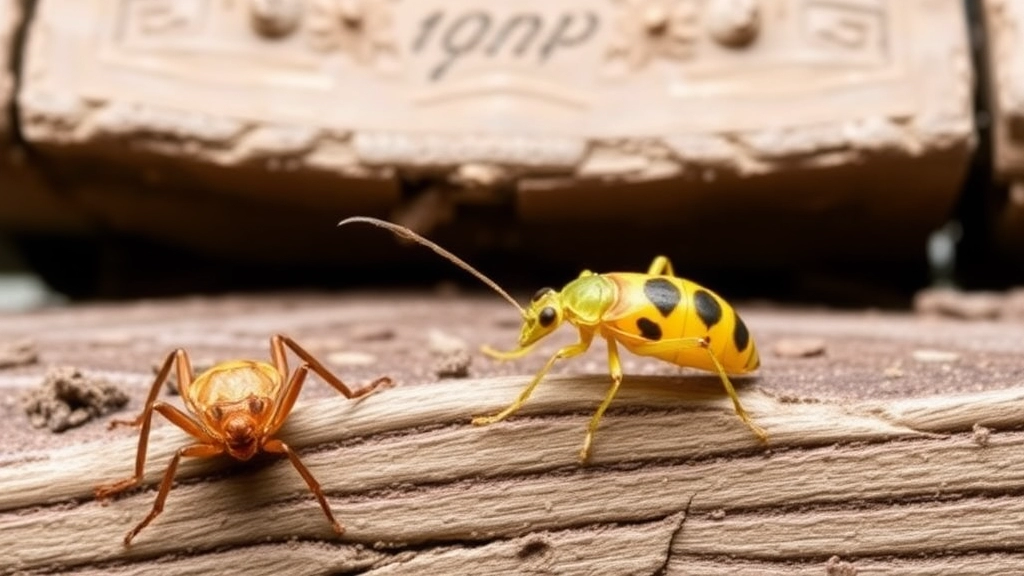
So, you’ve got your gorgeous Dark Blue Kalanchoe thriving, but suddenly, you spot some unwelcome guests. Pests can be a real headache, can’t they? Let’s dive into the common culprits and how to keep your plant safe.
Common Pests to Watch Out For
- Mealybugs
These little white fluff balls love to hide in the nooks of your plant.
They suck the sap, weakening your Kalanchoe. - Aphids
Tiny green or black bugs that congregate on new growth.
They can stunt your plant’s growth and spread diseases. - Spider Mites
Look for fine webbing on your plant.
These pests thrive in dry conditions and can cause leaf yellowing. - Scale Insects
Hard, shell-like spots on leaves.
They also suck sap, leading to poor plant health.
Prevention Tips
- Regular Inspections
Check your plant weekly. Catching pests early makes a huge difference. - Keep it Clean
Wipe leaves with a damp cloth to remove dust and any lurking pests. This helps your plant breathe better. - Neem Oil
A natural pesticide that works wonders. Spray it on your Kalanchoe every couple of weeks, especially during the growing season. - Isolation
If you spot pests on one plant, move it away from your other plants to prevent the spread. - Healthy Environment
Keep your Kalanchoe in optimal conditions. A stressed plant is more susceptible to pests.
Fertilizers for Optimal Growth
After understanding the best practices for watering your Dark Blue Kalanchoe, it’s essential to focus on how to nourish this stunning plant for optimal growth.
Choosing the right fertilizer can make a significant difference in the health and vibrancy of your Kalanchoe. But what should you use?
- Type of Fertilizer:
- Use a balanced, water-soluble fertilizer with an N-P-K ratio of 20-20-20.
- Alternatively, a succulent-specific fertilizer can work wonders, as it’s formulated to meet the unique needs of these plants.
- Frequency:
- Fertilize every 4-6 weeks during the growing season (spring and summer).
- Reduce or stop fertilizing in the fall and winter when the plant enters dormancy.
- Dilution:
- Always dilute your fertilizer to half the recommended strength.
- This prevents nutrient burn, ensuring your Kalanchoe thrives without stress.
- Application:
- Apply fertilizer to moist soil to help with absorption.
- Avoid getting fertilizer on the leaves, as this can cause damage.
- Signs of Nutrient Deficiency:
- Yellowing leaves or stunted growth may indicate a lack of nutrients. Adjust your fertilization routine accordingly.
By providing the right nutrients, your Dark Blue Kalanchoe will flourish, showcasing its vibrant hues and unique charm. For more detailed care tips, check out our complete guide to caring for Kalanchoe succulents. Additionally, if you notice any issues with your plant, such as wilting flowers, you might find our resource on causes and fixes for wilting Kalanchoe flowers helpful.
Indoor vs Outdoor Care: Choosing the Right Environment
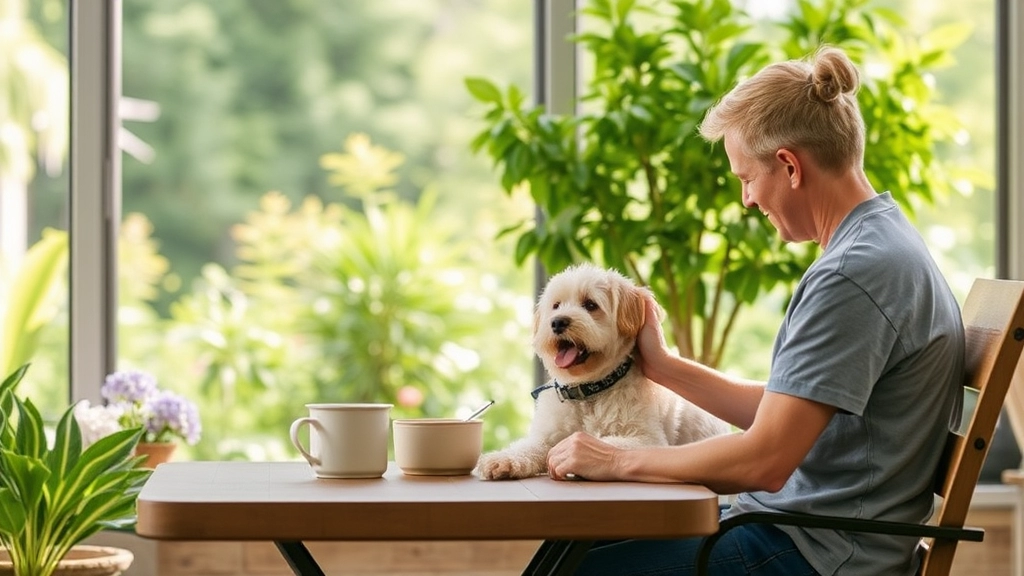
So, you’ve got your rare Dark Blue Kalanchoe and you’re buzzing to see it thrive. But here’s the million-dollar question: should you keep it indoors or let it bask in the great outdoors?
Let’s break this down.
Indoor Care: The Cozy Option
Keeping your Kalanchoe indoors can be a fantastic choice. Here’s why:
- Controlled Environment: You can manage temperature and humidity easily.
- Protection from Pests: Less exposure means fewer pests to deal with.
- Decorative Appeal: They make stunning indoor plants, adding a pop of colour to your space.
Tips for Indoor Care:
- Place it near a bright window but avoid direct sunlight.
- Maintain a temperature between 18-24°C.
- Ensure good air circulation to prevent mould.
Outdoor Care: The Natural Choice
If you’re leaning towards outdoor care, there are some perks too:
- Natural Light: Your Kalanchoe can soak up the sunlight it craves.
- Space to Grow: If you have a garden, it can spread out and flourish.
- Fresh Air: Plants love it, and so do we!
Tips for Outdoor Care:
- Choose a spot with partial shade, especially during the hottest parts of the day.
- Make sure the soil drains well to prevent waterlogging.
- Protect it from extreme weather conditions, like frost.
Finding the Balance
Ultimately, the decision boils down to your living situation and how much time you can dedicate to care.
Are you someone who loves the idea of a vibrant indoor garden, or do you fancy the thought of watching your Kalanchoe thrive under the sun?
No matter what you choose, just remember to keep an eye on its needs.
Popular Varieties of Kalanchoe with Unique Color Features
As we explore the fascinating world of Kalanchoe, it’s essential to highlight the diverse varieties that captivate plant enthusiasts with their unique colour features. These stunning plants not only brighten up spaces but also offer a range of colours that can complement any decor.
1. Kalanchoe Blossfeldiana
- Description: Known for its vibrant clusters of small flowers, this variety comes in shades of red, pink, yellow, and white.
- Ideal Use: Perfect for indoor pots or as outdoor bedding plants in warmer climates.
2. Kalanchoe luciae (Paddle Plant)
- Description: This succulent features large, paddle-shaped leaves that can turn a striking red or orange at the tips when exposed to sunlight.
- Ideal Use: A fantastic choice for rock gardens or as a statement piece in succulent arrangements.
3. Kalanchoe thyrsiflora
- Description: Often called the ‘Flapjack’, this variety showcases vibrant green leaves that turn a rosy hue in cooler temperatures.
- Ideal Use: Great for container gardening or as part of a mixed succulent display.
4. Kalanchoe beharensis (Felt Plant)
- Description: With its distinctive felt-like leaves, this variety can display shades of grey and green, adding a unique texture to your collection.
- Ideal Use: Works well in indoor settings or as an accent plant in outdoor arrangements.
5. Kalanchoe ‘Pink Butterflies’
- Description: This hybrid boasts delicate pink flowers that resemble butterflies, making it a charming addition to any garden.
- Ideal Use: Ideal for hanging baskets or as a cheerful indoor plant.
These Kalanchoe varieties not only provide a visual feast but also cater to various gardening styles, whether you prefer indoor arrangements or outdoor displays. For those interested in growing the Kalanchoe luciae, check out our comprehensive guide to care for Kalanchoe luciae. Additionally, if you are fascinated by the Kalanchoe ‘Pink Butterflies’, our complete care guide for Kalanchoe ‘Pink Butterflies’ is a must-read.
FAQs About Dark Blue Kalanchoe
What are the light requirements for Dark Blue Kalanchoe?
Dark Blue Kalanchoe thrives in bright, indirect sunlight. An ideal spot would be a windowsill with filtered light. Avoid placing it in direct sunlight as it can scorch the leaves.
What is the optimal temperature range for Dark Blue Kalanchoe?
This plant prefers a warm environment with an optimal temperature range of 20-25°C (68-77°F). It’s important to keep it away from cold drafts like chilly windows or air conditioning vents.
How do I manage humidity levels for Dark Blue Kalanchoe?
Dark Blue Kalanchoe prefers moderate humidity levels. If your home is dry, consider placing a tray of water nearby or misting the plant occasionally to increase humidity.
Why is good air circulation important for Dark Blue Kalanchoe?
Good air circulation helps prevent fungal issues. Ensure your plant isn’t cramped in a corner and has some space to “breathe.” A little breeze can be beneficial.
What type of soil is best for Dark Blue Kalanchoe?
A well-draining soil mix is essential to prevent root rot. A sandy or gritty texture with a slightly acidic to neutral pH (6.0 to 7.0) is ideal. You can create a potting mix with 60% potting soil, 30% perlite or pumice, and 10% compost.
What should I consider when choosing a pot for Dark Blue Kalanchoe?
Choose a pot with adequate drainage holes to prevent water accumulation. The pot should be appropriately sized to allow for growth but not so large that it retains excess moisture.
What are common pests that affect Dark Blue Kalanchoe?
Common pests include mealybugs, aphids, spider mites, and scale insects. Regular inspections, keeping the plant clean, using neem oil, isolating affected plants, and maintaining a healthy environment can help prevent these pests.
Should I keep my Dark Blue Kalanchoe indoors or outdoors?
Both options have their benefits. Indoors, you can control temperature and humidity easily, and there’s less exposure to pests. Outdoors, the plant can enjoy natural light and fresh air. Choose based on your living situation and how much care you can provide.
Tips for Indoor Care:
- Place it near a bright window but avoid direct sunlight.
- Maintain a temperature between 18-24°C.
- Ensure good air circulation to prevent mould.
Tips for Outdoor Care:
- Choose a spot with partial shade, especially during the hottest parts of the day.
- Make sure the soil drains well to prevent waterlogging.
- Protect it from extreme weather conditions, like frost.
References
-
Gardening Know How: Dark Blue Kalanchoe Care Tips
-
The Spruce: How to Grow Kalanchoe Plants
-
The Old Farmer’s Almanac: Kalanchoe Plant Guide
